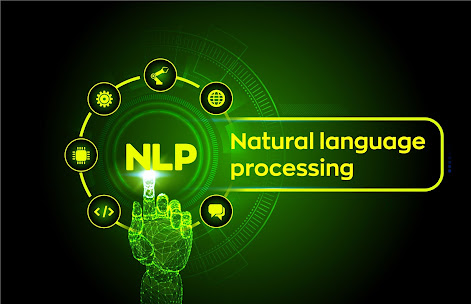Natural Language Processing : Unleashing the Power of AI in Text and Speech
In the realm of artificial intelligence (AI), Natural
Language Processing (NLP) stands tall as a pivotal technology that enables
machines to comprehend, interpret, and respond to human language. The marriage
of linguistics, computer science, and AI has birthed a revolutionary field that
empowers machines to understand, interpret, and generate human language. NLP
holds immense potential across various domains, reshaping how we communicate,
analyze data, and interact with technology.
- Understanding Natural Language Processing : At its core, NLP focuses on the interaction between computers and human language. It equips machines with the ability to comprehend the nuances of human speech and text, bridging the gap between human communication and computational understanding. This interdisciplinary field draws from linguistics, computer science, machine learning, and artificial intelligence to process, analyze, and derive meaning from vast volumes of textual data.
- Components of NLP : NLP encompasses various components that collectively enable machines to process language effectively . Tokenization and Text Preprocessing: This step involves breaking down text into smaller units (tokens) such as words or phrases, facilitating subsequent analysis and interpretation.
- Syntax and Parsing: Analyzing the grammatical structure of sentences helps machines understand the relationships between words, identifying the subject, verb, object, and other linguistic elements.
- Semantic Understanding: NLP aims to comprehend the meaning behind words and phrases, considering the context in which they are used. This includes sentiment analysis, entity recognition, and disambiguation.
- Machine Translation: One of the most well-known applications, machine translation uses NLP to translate text from one language to another, aiming for accurate and contextually relevant outputs.
- Speech Recognition: NLP extends to speech recognition, converting spoken language into textual form, enabling interactions through voice assistants and transcription services.
- Applications of NLP : The breadth of NLP's applications is extensive and continually expanding, impacting various industries and daily life.
- Chatbots and Virtual Assistants: NLP powers intelligent chatbots and virtual assistants, enhancing customer service, providing information, and automating interactions across numerous sectors.
- Sentiment Analysis: Analyzing sentiments expressed in text helps in understanding public opinion, customer feedback, and market trends, crucial for businesses in making data-driven decisions.
- Information Extraction: NLP assists in extracting relevant information from vast volumes of unstructured data, facilitating tasks like information retrieval, summarization, and data categorization.
- Healthcare: From clinical documentation to analyzing medical records, NLP aids in extracting valuable insights, improving diagnoses, and advancing research in the healthcare sector.
- Finance and Trading: NLP is utilized in analyzing financial reports, news sentiment, and market trends, enabling better investment decisions and risk management.
- Education: NLP applications in education range from personalized learning platforms to automated grading systems, catering to diverse learning needs.
- Ambiguity and Context: Understanding context and resolving ambiguity in language remains a significant challenge for NLP systems.
- Bias and Fairness: NLP models might perpetuate biases present in training data, necessitating efforts to create fair and unbiased AI systems.
- Linguistic Diversity: Accommodating diverse languages and dialects requires comprehensive linguistic resources and models.
- The future of NLP holds exciting prospects with ongoing research in:
- Multimodal NLP: Integrating text with other modalities like images and videos for more comprehensive understanding.
- Continual Learning: NLP models that can adapt and learn continuously from new data sources without forgetting previous knowledge.
- Ethical AI: Emphasizing ethical considerations in NLP, ensuring transparency, fairness, and accountability in AI systems.
- Conclusion : Natural Language Processing stands as a cornerstone in the evolution of AI, revolutionizing how machines understand and interact with human language. Its applications span across diverse domains, impacting industries, communication, and daily life. While challenges persist, ongoing advancements and ethical considerations promise a future where NLP continues to unleash the profound potential of AI in text and speech, fostering a more connected and efficient world.
Thanks for reading. see you soon with a lots of knowledge with Nikhil

Comments
Post a Comment